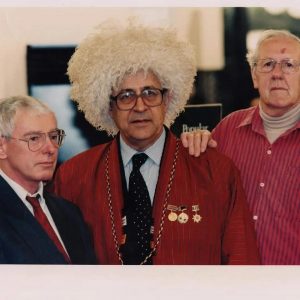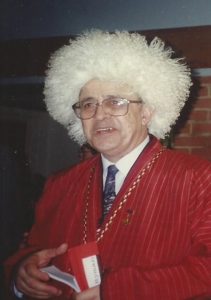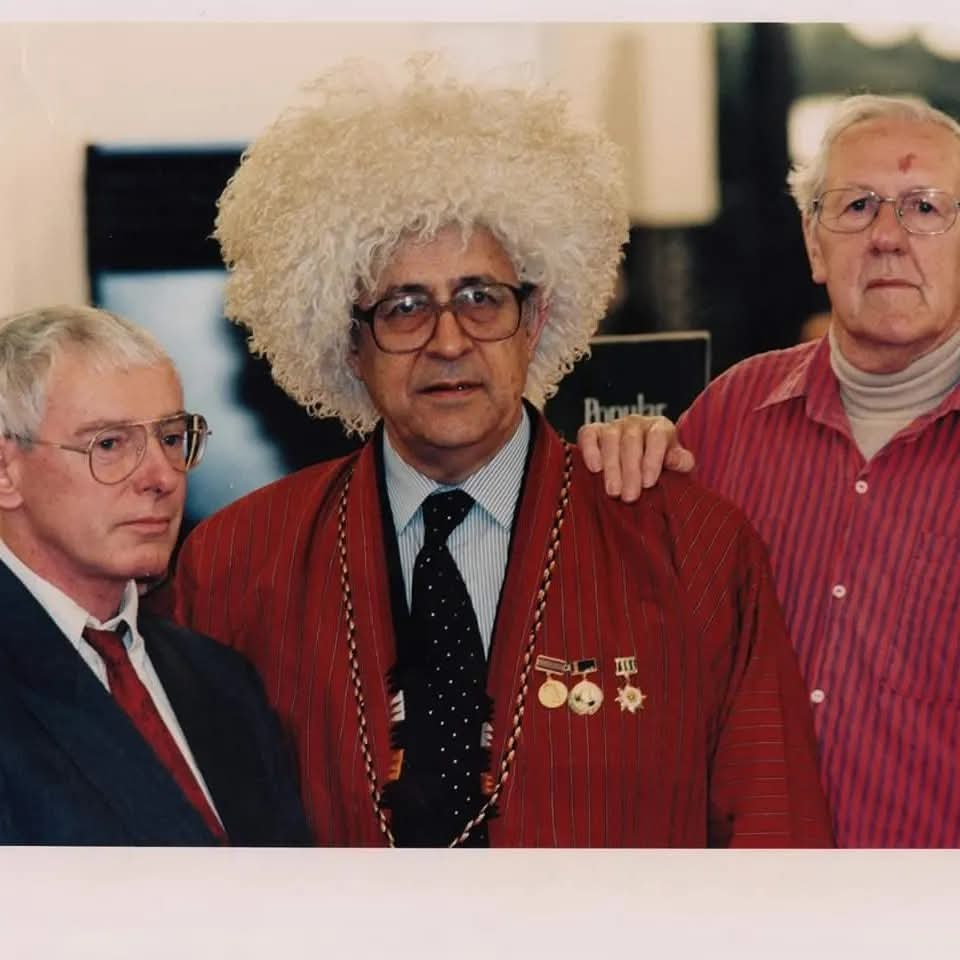The Turkmens are the descendants of the Oghuz group of the Turkic peoples. The Turkmen language has preserved essential properties of Old Turkish, i.e., the long vowels. I have discovered the origin of the word ‘yurt’ in a dialect of the Turkmen language. It is a rich language, particularly when used by those who are familiar with it. The wealth of the language of the Turkmen writer Berdi Kerbabayev earned him prizes for his novel, “The Decisive Step,” which has been translated into 50 languages.
Three Turkmen classical poets have written poems about the Oghuz alphabet, which has been used for over 3,000 years. Türkmen XVIII century poet Sheydayi wrote a poem called Beautiful Twenty-five,” which is an elegy to the alphabet that had disappeared. From his poem, we understand that the alphabet had seven vowels and eighteen consonants:
It was so pleasant to my ear, I enjoyed uttering it, O beautiful Twenty-Five.
So harmonious they sounded, I followed you, O beautiful Twenty-Five.
Seven of them produced a voice, pulling along the remaining eighteen.
When your life ended after three thousand years,
I cried as loudly as a camel, O beautiful Twenty-Five.
From this poem, we understand that the alphabet has seven vowels and eighteen consonants. In another verse, the poet says: Arabic became the moth of other languages.
Some letters from the Turkish Runic alphabet, used by Turks living in Mongolia from the 6th to the 8th century, have become motifs on Turkmen carpets. A recently discovered watermelon-shaped Oghuz tombstone bears signs that appear to be inscriptions. Some of these signs also exist on Turkmen carpets.
Sarianidi, a renowned Russian archaeologist who discovered a four-thousand-year-old culture in Turkmenistan, presented signs he had found at the archaeological site at a conference on Turkmen carpets. They were similar to designs on Turkmen carpets. Another Russian scholar has found similarities between symbols in southern Turkmenistan and those in Elam, as well as between early Sumerian signs used in Sumerian writing.


The wealth of the language of the 18th-century Turkmen classical poet Makhtumkuli was recognized in Europe in the 19th century. His language influenced other Turkmen poets. Innumerable classical poets existed in the 18th and 19th centuries. Some poets also wrote in prose. Prose also continued to develop in folk literature.Despite the significant wealth of the Turkmen language, nothing much has been written in or about it. I have written some articles about the linguistic aspects of Turkmen culture. A Turkmen English dictionary was published by Indiana University, but a serious English Turkmen dictionary has not been published. Hence, Dr. Orazgylyjov’s recent Makul dictionary is the first one.Pierre Bourdieu, a famous sociologist, regarded dictionaries as covering concepts that take sides. According to him, all dictionaries are pushy; they seem to explain, but in fact, they give legality to some words. This is, to some extent, true. There are, however, numerous dictionaries that serve different purposes. Each follows a different form of lexicology.After the collapse of the Soviet Union, people of various Soviet republics faced changes in their lives. Life began to develop fast. They began facing new experiences in fields such as technology, tourism, trade, and the economy. Not many people knew little English. Therefore, they had to use the English form of computer terms. Under these circumstances, in Turkmenistan, a good English dictionary was a necessity. Dr. Dovran Orazgylyjov, with a new form of lexicology, prepared a Makul English-Turkmen dictionary of widely used words in various areas. It is the most useful dictionary for the Turkmen people and others. Orazgylyjov has created a new form of lexicology that seems reasonably practical for users. It covers the Turkmen equivalents of the widely used word in various areas of modern life. With time, it will be renewed when needed.
I congratulate Dr. Orazglyjov on fulfilling such an important task, which will be helpful to readers.
About the Author
Professor Yusup Azmun is a distinguished linguist, literary scholar, and creative intellectual who has made an immense contribution to the global recognition and scholarly study of the Turkmen language. He devoted his life to exploring the phonetic structure, lexicon, and morphology of the Turkmen language, as well as the linguistic foundations of Turkmen folklore. His research on “The Phonetic Structure of the Turkmen Language,” “Dede Gorkut,” and the works of Magtymguly Pyragy has been highly acclaimed by the international academic community.
Born in 1939, Professor Azmun is the author of dozens of scholarly books, hundreds of articles, and numerous translations. He has carried out academic work for many years in Turkey, the United Kingdom, the United States, and other countries. He is not only a scholar but also a cultural ambassador who has introduced the classical values of the Turkmen language to the global community.
For his exceptional contributions to the national culture and linguistic heritage of the Turkmen people, Professor Yusup Azmun has been honored with Turkmenistan’s Magtymguly State Literature Award and Turkey’s Honorary Award of the Turkish Language Association. His academic and creative legacy continues to inspire the younger generation of Turkmens.
AZAT NAZAROW: “MAKUL SÖZLÜK” IŇLIS DILINI ÖWRENÝÄNLER ÜÇIN ÝEŇILLIK

